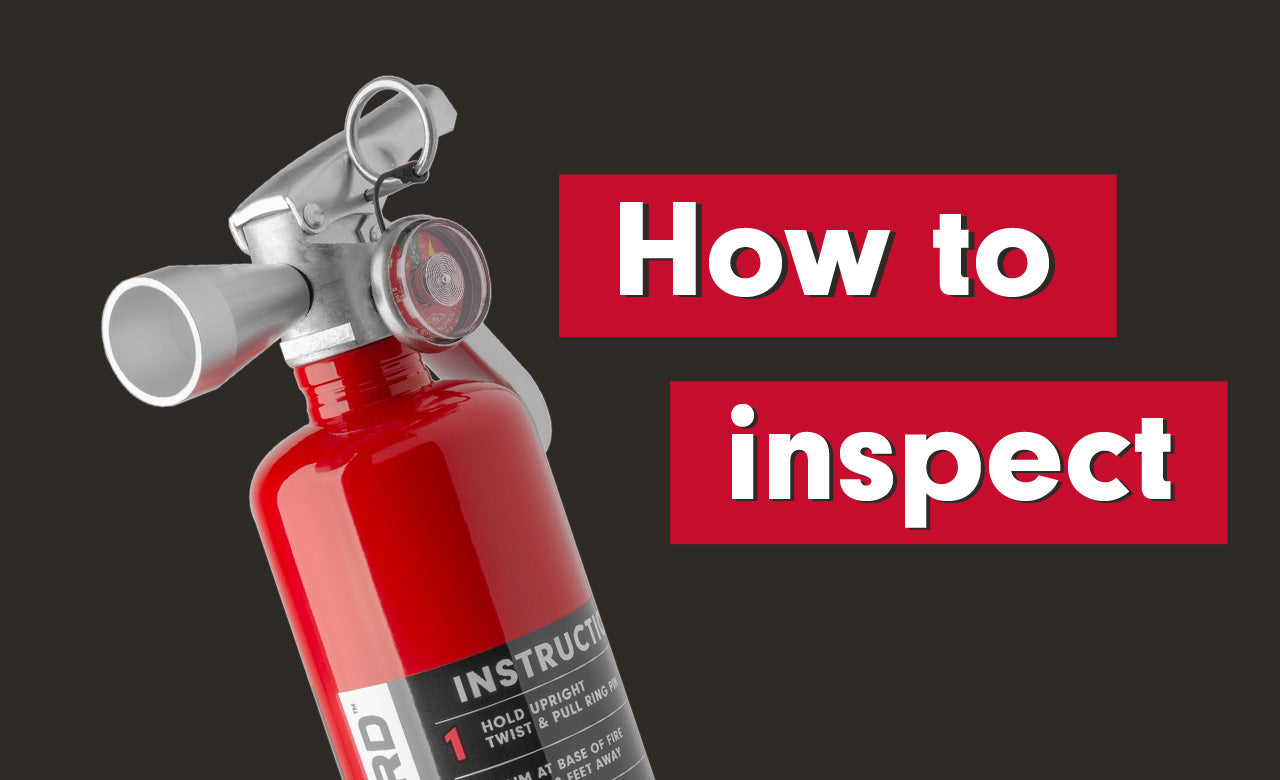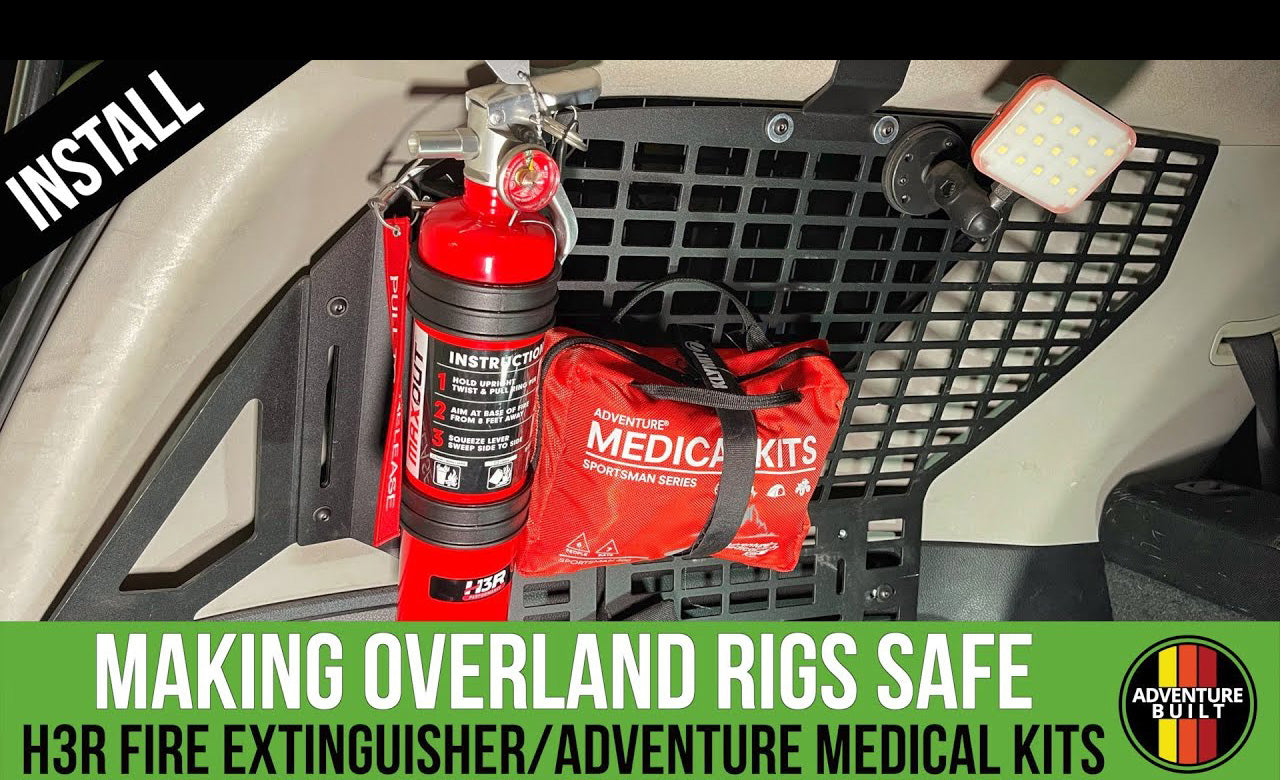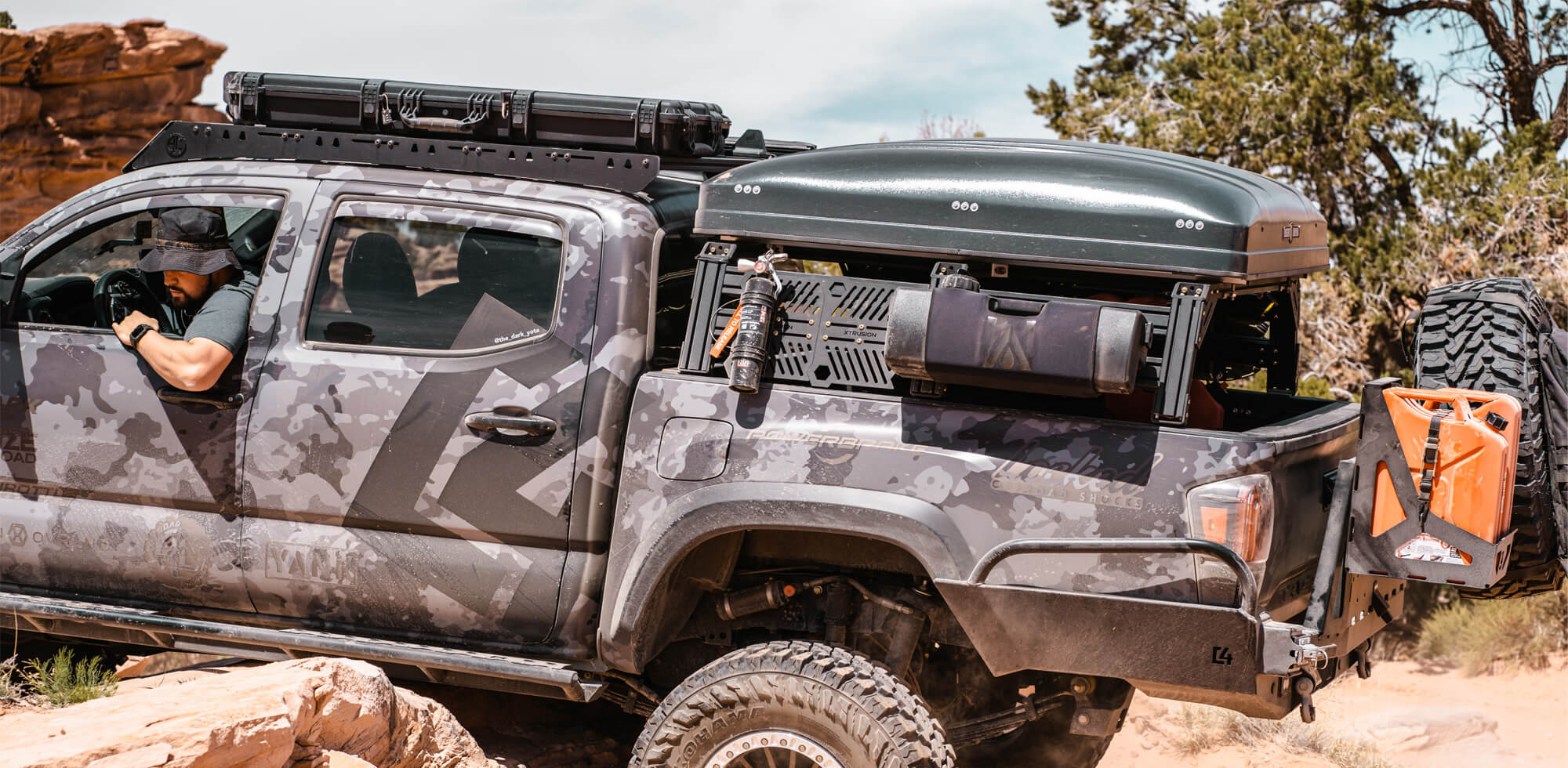In this premier edition of FireTalk, we interview Texas Search and Rescue medic and avid off-roader Kenneth Lindbloom about his experience putting out a fire in his Jeep with our MaxOut model MX250R ABC rated dry chemical fire extinguisher.
FireTalk serves you useful tips on vehicle fire extinguishers and their use, with interviews and real-life examples of what works, and what doesn’t in a fire situation. Whether you are driving a prepper vehicle, a modified import, or a daily driver, we share tips and tricks to make your fire preparedness more practical and effective.
Interviewer:
Kenneth, thank you so much for taking the time to share your story. What happened? How did this fire get started?
Kenneth:
I was installing a subwoofer in my Jeep and passing more wiring through the firewall. I have an analog oil gauge in the cab. So that means that a little nylon tube ran from the engine to the gauge in the cab, and when I was drilling a hole through the fire-wall, the drill bit scraped it just a little bit. It didn't leak right away, so I didn't notice the problem until I was at my father-in-law's property getting ready to jump-start this old YJ.
Smoke started coming out of the Jeep and I walked over. The hood was open and I could see fire. The first thing I knew to do was to turn the Jeep off to make sure whatever initial fuel source the fire had was cut off. And then, fortunately, I had my extinguisher located right by the ignition. So as soon as I turned it off I was able to grab the extinguisher. I sprayed it into the engine compartment, onto the two mini “cats” (catalytic converters) that are on the driver's side. It put the fire out very quickly - like in the first burst it went out. And I gave it a couple of more bursts.
The really dangerous thing is that I was on some rural property and there was probably grass underneath the vehicle that could have caught fire. I had the Jeep parked under a carport that was adjacent to a bunkhouse. As a search and rescue medic, I have a jump bag in the back. A lot of times it has a cylinder of medical oxygen in it. So if this fire had caught to the ground and gone further back, bypassing the firewall, and caught the rest of the vehicle on fire, and ignited the medical oxygen, there could have been an explosion.
Interviewer:
So it sounds like the extinguisher put the fire out pretty quickly. Did you find it easy to use?
Kenneth:
Yes, and I would break that down into the mount and the extinguisher separately. As a SAR medic (we learn in training) when you get in a high-stress situation, you "go dumb" and overlook some things.
One thing you can do, especially if you don't have the opportunity to train, is to try to plan ahead and make things easier for yourself. I used to have a fire extinguisher mounted in the cab, but I moved it to the back, and I had one of those roll bar extinguisher mounts that are Velcro. When I bought the MaxOut extinguisher, I threw out the mount that came with it because I was used to keeping it in the back of the Jeep. But after hanging out with some of my overlander friends and planning more about how I would actually need to use this in a fire, I moved it back into the cab.
I see your company also makes a quick release, and after this experience, I think it's worth spending a little bit of money on a quick release. Because that made all the difference. And it just comes right out and you're ready to go. So I think having a quick release helps you deal with "going dumb" a little bit in a high-stress situation. The second thing is that the extinguisher itself was easy to use. But like I explained about "going dumb” in a high-stress situation, (the following) could have happened with any fire extinguisher. You've got the retaining pin, which you can see comes out super easy. Then you have the plastic retaining wire on there so that when you pull the pin out it doesn't drop to the ground and get lost. But in that stressful situation I somehow wrapped my finger on top of that plastic wire and when I pulled it wouldn't come out at first. So I just pulled harder and as you can see it snapped, fortunately. I gave myself a minor cut. That's a training thing.
FEMA has a free preparedness class and one of the things you get practice with is using fire extinguishers.

Interviewer:
You are above and beyond prepared, and I think this is a teachable moment. Most people will put an extinguisher in and think "I'm prepared!" and not think about the fact that you might want to do a mock run through of what you would do in an emergency.
Kenneth:
Someone in the business world came out with this model of "people, process, and technology." A lot of people think they can just buy a gadget, the technology portion of it, and they are good. But you also have the people and process part. You need to have people who are capable, physically and mentally, and they need to be trained to do whatever task you are trying to accomplish. And you need to have a process in place to execute whatever your plan is. You can't just buy a piece of equipment and expect it to be a magical talisman that solves all of your problems. 
Before I got involved with search and rescue I went through FEMA's Community Emergency Response Team program (CERT) and you learn things like triage, basic first aid, patient evacuation, putting out small fires, cribbing, etc.
And then I tried to put out another engine fire. I had purchased a small fire extinguisher because it was inexpensive, for like $20. I had it mounted close to the seat, and part of the problem with that was that the nozzle was plastic. When I'd get into the Jeep, one of my feet would keep hitting the nozzle and it broke off. I glued it back on, which is not the ideal thing to do!
I was eating breakfast one day at a diner when I saw a vehicle in the parking lot had an engine fire. I pulled out the extinguisher and sprayed it on the fire. It went out initially, but then it flashed right back up. So what I took away from that is that I wanted more material in the extinguisher. And your MaxOut extinguisher is 2.5 lb., and I just so happened to come across it when I was in a 4 Wheel Parts store. Not only did it have more material, which meant I had a better chance of extinguishing a fire, but the nozzle is also made of metal. So I wasn't worried if my feet hit it that the nozzle would break off. 
I also noticed the handle is shaped differently than the one I had (previously) bought, making it overall more compact. I've been able to put this thing in a quick release in my Jeep where I can reach it very quickly. It's right by me. And if I were to get in a car wreck, get trapped in the vehicle, and there was a fire, I could try to protect myself by having that right at my feet. And in the scenario I just brought up, if I have an oil leak that suddenly developed and it's dripping onto grass, and I'm worried about dry grass catching on fire, I wouldn't want just a B:C (rated) extinguisher. I'd really want an A:B:C (rated) extinguisher.
Interviewer:
Yes, it's an interesting point and it is something we try to tell our customers. When choosing a fire extinguisher, make sure that it is rated for the type of fire you are likely to have, and make sure that it is easily accessible. As you can attest, every second counts.
Kenneth:
Like I said, those Velcro roll bar extinguisher (mounts), I know they are popular. I know they are cheap. But I would never go with Velcro again. Because that is what I had, and it took me a lot longer to get that extinguisher out of the Velcro. That's why I would never use anything but a quick-release.
Interviewer:
Those are all great things, and you've obviously thought it out. We like to try and help educate people so they can make the right choice for themselves. Was there anything else that made you choose H3R Performance extinguishers?
Kenneth:
It was the size, the form factor, the additional material, the metal nozzle and it was the A:B:C rating. The MaxOut extinguisher was a little bit more expensive. But boy, after it saved the vehicle and possibly a lot more than that, I would say that spending the little bit of extra money was definitely worth it.
Interviewer:
Did having this fire make you think twice about "Ok, where else do I need to have one?"
Kenneth:
Oh, absolutely! My wife drives a Toyota Tacoma, and I know all the Toyota overlander guys would be yelling at me that Toyotas don't catch on fire like Jeeps do! But I still felt it was important to put one in her vehicle. Because like in that first situation I described, it wasn't my own vehicle that caught on fire, it was someone else's. I've read some of the reviews on your website from people that have used your extinguishers. One reviewer mentioned stopping for a woman and a child that were trapped in a car wreck that was burning. He had not just one, but two extinguishers with him. And he was able to use one extinguisher to put out the car fire, and then some grass nearby had caught on fire and he was able to use the second extinguisher for that. So even though I'm not worried about the Toyota catching on fire, like my Jeep, I definitely see the value in having an extinguisher if you are willing to do things like stop and help other people. And I know a lot of off-roaders have that self-sufficiency mindset. They have a first aid kit, they have a fire extinguisher, they have all that.
I would just add that if you have that kind of mindset that's fantastic. But I wouldn't forget that training component. That one class I mentioned, the FEMA CERT program, that's absolutely free. All it requires is you putting in a little bit of time, and then you can get some practice using a fire extinguisher that you are not even having to pay for. And you get to practice in a safe, controlled environment with people who know what they are doing, and then you are a little better prepared.
Interviewer:
Last question. You have your awesome Jeep behind you and a lot of our followers are Jeep enthusiasts. What other kind of activities do you use your Jeep for?
Kenneth:
Before I got into Search and Rescue, when I first bought my Jeep I got involved with this group called Houston Area Off-Road Recovery. It's a loosely organized group. And I did a lot of exciting things. I recovered small cars from ditches using my winch. I've gone on some bigger recoveries of surplus military trucks, and more commercial equipment, which involved a team effort of more than one vehicle. You've got anchor vehicles in the back. You've got two winch vehicles. You're doing multiple snatch blocks. It was really fun learning that kind of thing. In the process of volunteering and just using the Jeep, I've driven through several floods, and after that, I decided to get involved in SAR. Offroading doesn't come into play a whole lot, but when it does you really need it. Recently I did a search where we were looking for a missing person and it involved getting into some very hard-to-reach places. The lessons that I learned from all that time spent doing recoveries and off-roading really helped ensure that I didn't end up getting stuck. In addition to doing the SAR stuff, I've been getting more into overlanding, taking trips to Big Bend. I'm planning a trip next year to Black Bear Pass and some other parts of Colorado with a friend.
Interviewer:
Thank you so much for taking the time to talk to us, and thank you for all your volunteer work. I think there are a lot of great lessons in your story and we appreciate you sharing with us so we can share with a wider audience. Have a great weekend!
Kenneth:
Thank you! You too.
UPDATE! Two weeks after our interview Kenneth sent us the following update.
Two days ago, I was on my way to work. I heard a noise behind me, looked in the mirror, and saw an SUV catch air and flip on its side. I put the Jeep in 4wd and drove through a ditch to make a u-turn and see if the driver needed help.
The first thing I grabbed was my medical bag. The second thing was my new MaxOut extinguisher, keeping in mind my recent experience and those shared in some of the MaxOut reviews I read.
There was a woman trapped inside, apparently in a great deal of pain, screaming for help. I was able to pull the broken windshield out to get to her and assess her condition. One of the first things I did was make sure the car was turned off, to help reduce the chance of a fire.
After I did an initial assessment, I concluded she was stable, there were no obvious indicators of a spinal injury (yet), but it was best to remain cautious. Because she was suspended in the air on the driver’s side, I also didn’t want to cut her seat belt and possibly have her sustain additional injuries in the fall - unless something like a fire created a bigger danger.
Instead, I attempted to stabilize her neck and keep her calm until the fire department arrived to safely extricate her. After they got her out of the vehicle, I was able to collect her purse and medications out of the wreck to give to her, before the ambulance left.
While I didn’t have to use my new extinguisher, it definitely provided some peace of mind. Should a fire have started, it would have taken time to get her out. Thank you again, for the extinguishers.
I took this photo, after she was safely loaded onto the ambulance.






